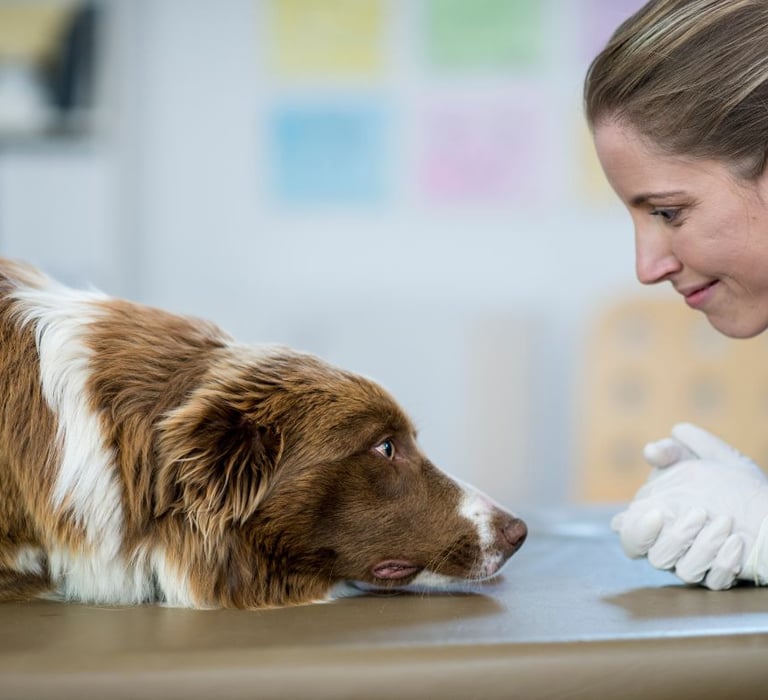Low Stress Handling and Restraint for Working Dogs


This post may have affiliate links. As an Amazon Associate, we earn from qualifying purchases from those links. This does not cost you anything and helps support the Sanctuary and all the animals in our care. This has no bearing on our reviews and comparisons. We will do our best to keep things fair and balanced to assist you in making the best decision for you and your animals.
Low stress handling and restraint for working dogs is an important topic that every pet owner, veterinary professional, and working dog handler should be knowledgeable about. By using low-stress techniques, we can minimize the anxiety, fear, and discomfort that dogs experience during handling and restraint procedures, resulting in a more positive and less stressful experience for both the dog and the handler.
Dorsal recumbency is a technique in which the dog is placed on its back, with its legs extended and restrained. This technique is useful for procedures such as nail trimming, blood draws, and abdominal palpation. To properly perform dorsal recumbency, start by gently lifting the dog by the front legs and placing it on its back on a soft surface. Then, extend the dog's hind legs and hold them down gently but firmly, being careful not to apply too much pressure. Finally, gently restrain the dog's front legs by holding them down near the wrists.
Ventral recumbency is another restraint technique in which the dog is placed on its stomach, with its legs extended and restrained. This technique is useful for procedures such as rectal exams and vaginal cytology. To perform ventral recumbency, start by placing the dog on its stomach on a soft surface. Then, extend the dog's hind legs and hold them down gently but firmly, being careful not to apply too much pressure. Finally, gently restrain the dog's front legs by holding them down near the elbows.
Lateral recumbency is a technique in which the dog is placed on its side, with its legs extended and restrained. This technique is useful for procedures such as ear cleaning and dental exams. To perform lateral recumbency, start by gently rolling the dog onto its side on a soft surface. Then, extend the dog's hind leg furthest from you and hold it down gently but firmly, being careful not to apply too much pressure. Next, extend the dog's front leg furthest from you and hold it down near the elbow. Finally, hold the dog's head steady with one hand while using the other hand to perform the procedure.
The Fear Free Pets Certification courses are a valuable resource for anyone who wants to learn more about low stress handling and restraint techniques for dogs (as well as other species). These courses teach techniques that can help reduce stress, anxiety, and fear in animals, which can lead to a more positive experience for both the animal and the handler. The courses cover a variety of topics, including body language, handling and restraint techniques, and the use of pheromones.
Pheromones are chemical signals that animals use to communicate with each other. In dogs, synthetic pheromones such as Adaptil can be used to help reduce anxiety and stress during handling and restraint procedures. These pheromones mimic the natural calming signals that dogs emit, helping to create a sense of calm and relaxation in the dog.
The "less is more technique" is another useful tool for reducing stress during handling and restraint procedures. This technique involves minimizing the amount of physical contact with the dog, while still maintaining control. For example, instead of holding a dog down with excessive force, the handler might use a leash or harness to gently guide the dog into the desired position.
Finally, it's important to note that dogs that are trained for patrol/protection should be sedated at the first sign of struggle to keep veterinary staff safe. These dogs are highly trained and may not respond well to handling and restraint techniques that are appropriate for other dogs. Sedation can help keep both the dog and the veterinary staff safe during procedures that might otherwise be difficult or dangerous.
Low Stress Handling and Restraint for Working Dogs
Restraint and handling should never be a struggle. Handlers can train their dogs to be comfortable with restraint.
